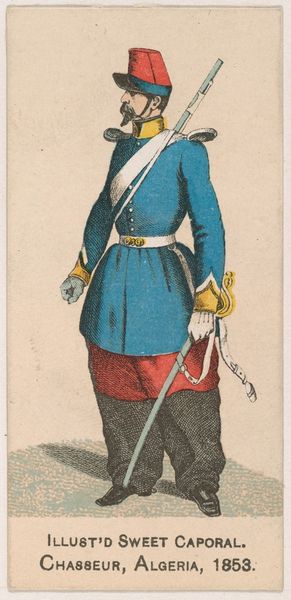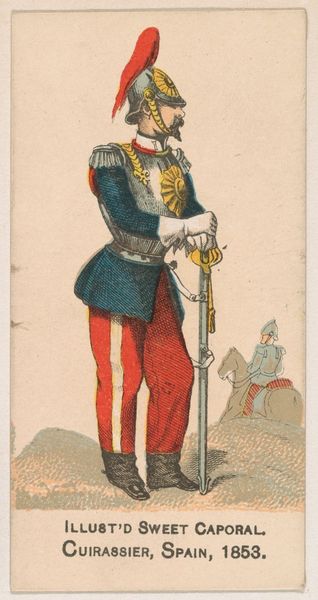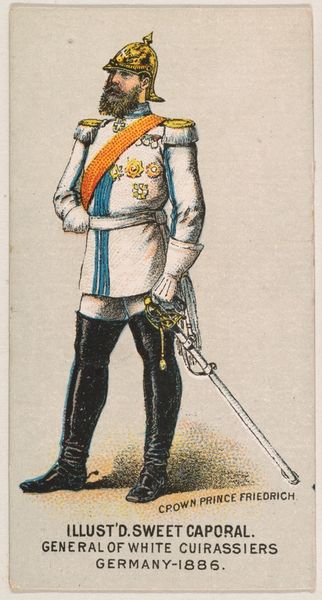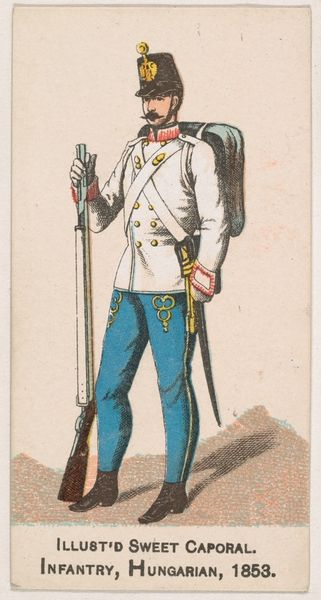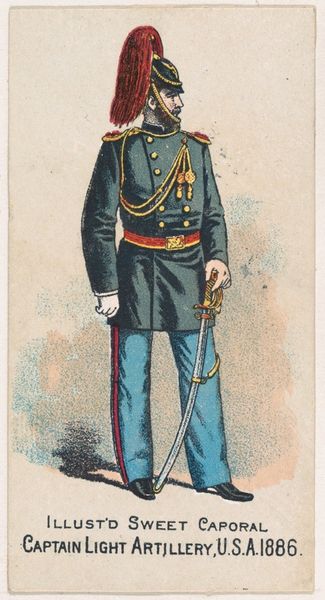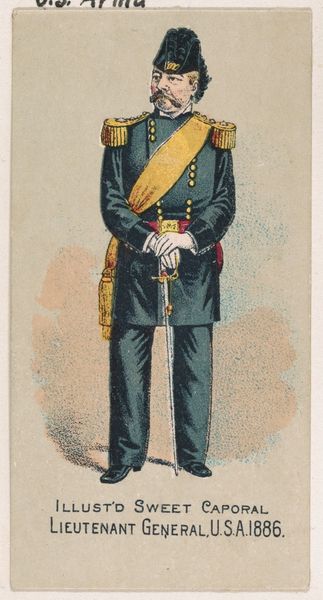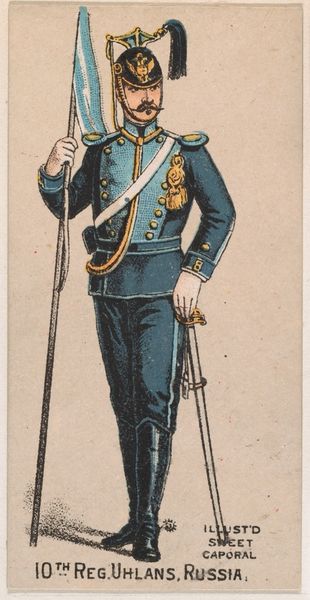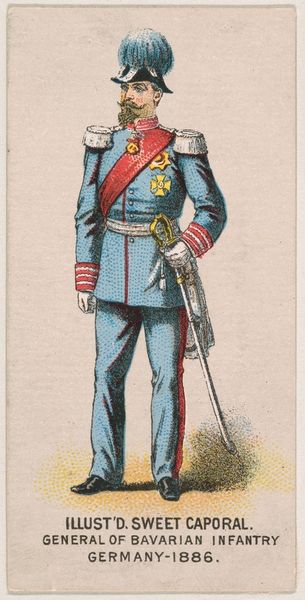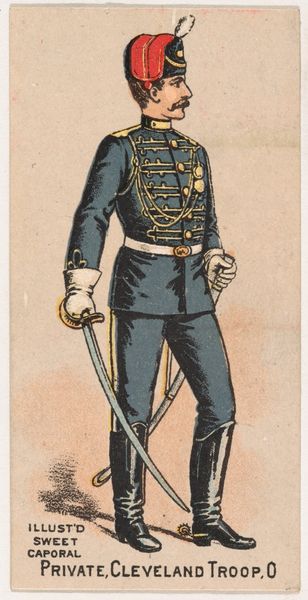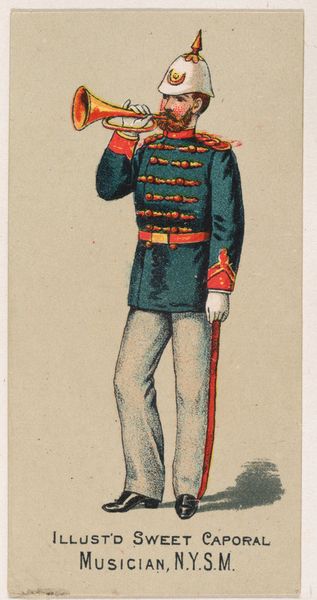
Drum Major, France, 1853, from the Military Series (N224) issued by Kinney Tobacco Company to promote Sweet Caporal Cigarettes 1888
0:00
0:00
drawing, coloured-pencil, print
#
portrait
#
drawing
#
coloured-pencil
# print
#
coloured pencil
#
soldier
#
genre-painting
#
watercolor
Dimensions: Sheet: 2 3/4 × 1 1/2 in. (7 × 3.8 cm)
Copyright: Public Domain
Editor: Here we have "Drum Major, France, 1853" from the Military Series. It was printed in 1888 by the Kinney Tobacco Company, using coloured pencils, I believe. It’s peculiar, because at first glance it appears to be a serious portrait, yet it was used to promote cigarettes. How do you see this artwork? Curator: This print fascinates me precisely because of its context: a mass-produced item designed to sell a product. Kinney Tobacco Company cleverly utilized the public's fascination with military figures to promote Sweet Caporal Cigarettes. Notice the materials, colored pencils, and printmaking – industrial means to quickly reproduce images on a large scale. Editor: So, the artistic value is intertwined with its function as advertisement? Curator: Absolutely. The value shifts from a traditional understanding of art as unique creation to one that embraces production, distribution, and consumption. This challenges the traditional art world's hierarchy. Why, do you think, did they choose a Drum Major specifically? Editor: Perhaps to associate the cigarettes with order and strength. And also the fantasy and adventure tied to exotic military personnel? Curator: Exactly. And consider the workers involved. Artists designing it, factory workers printing and packaging the cards - this "artwork" involved significant labor beyond a single creator. The accessibility of prints meant that art became more readily accessible to consumers. The commodification changes artmaking's economic dynamics. Editor: I hadn’t thought about it in terms of labour and industrial process. It highlights how consumerism affects art, and the blur between commercial imagery and artistic value. Thank you. Curator: A fascinating illustration, indeed. It forces us to consider art in the broadest societal context, and think about value beyond the traditional aesthetic and appreciate cultural industry’s wide effects.
Comments
No comments
Be the first to comment and join the conversation on the ultimate creative platform.
